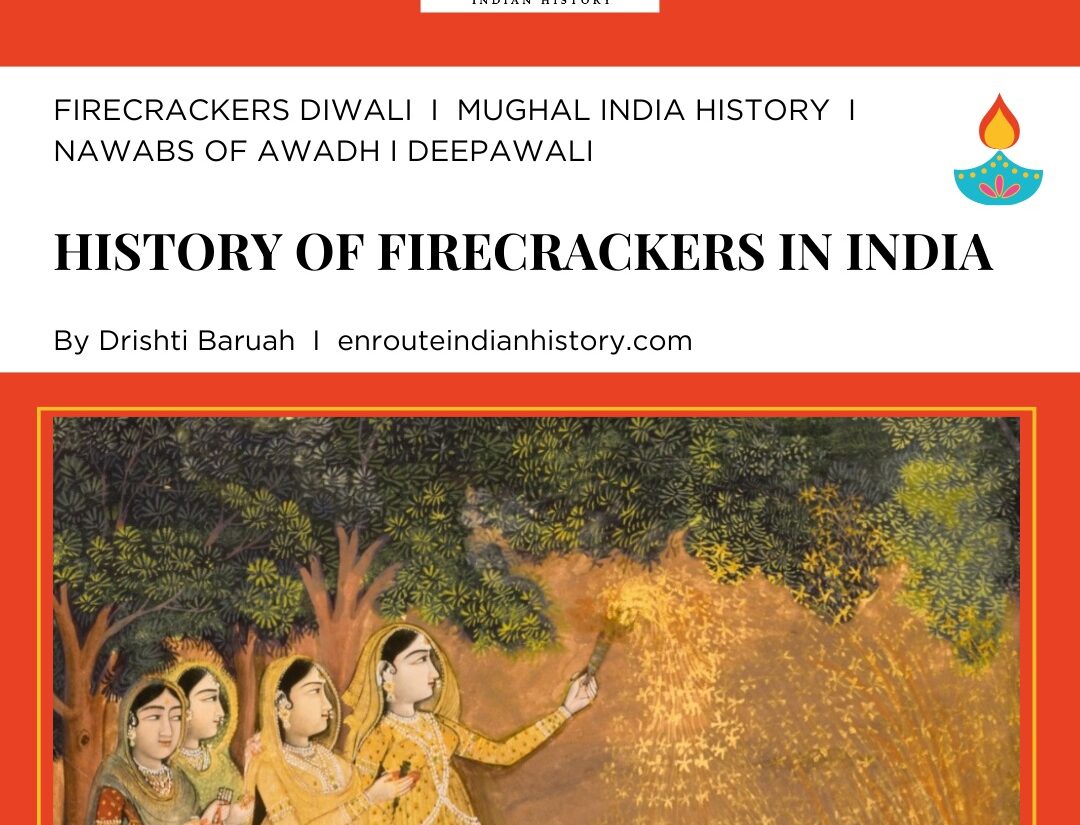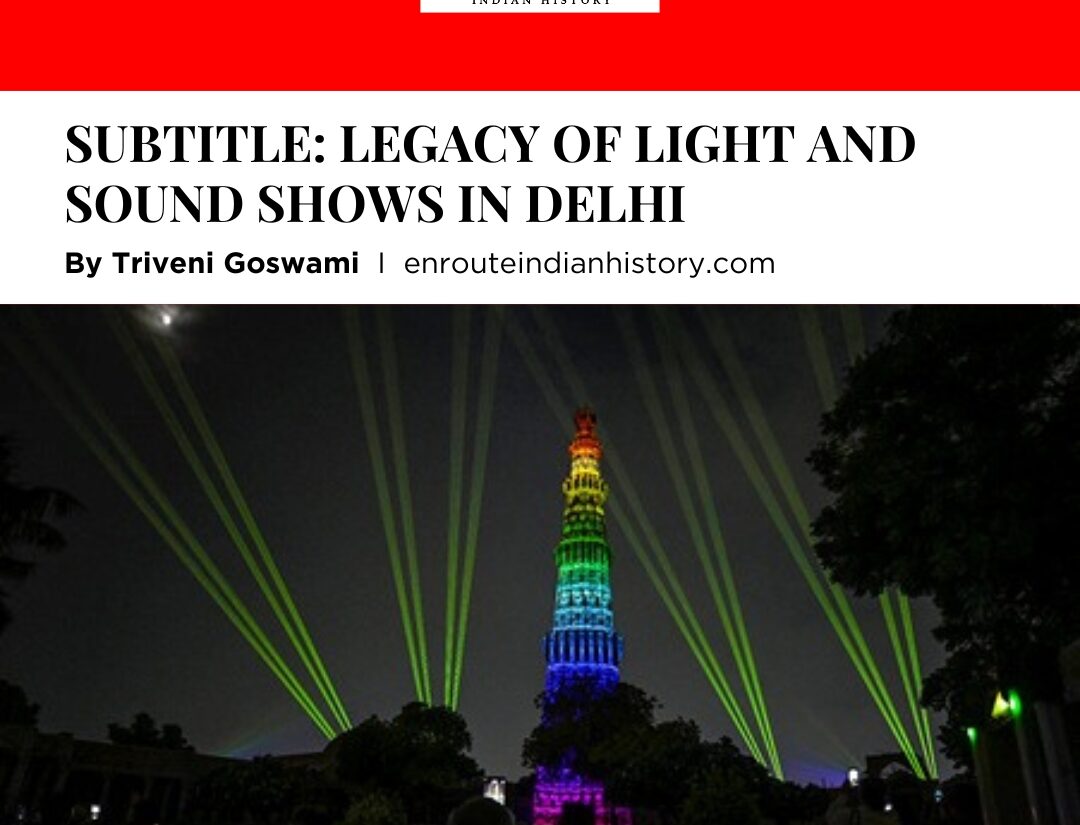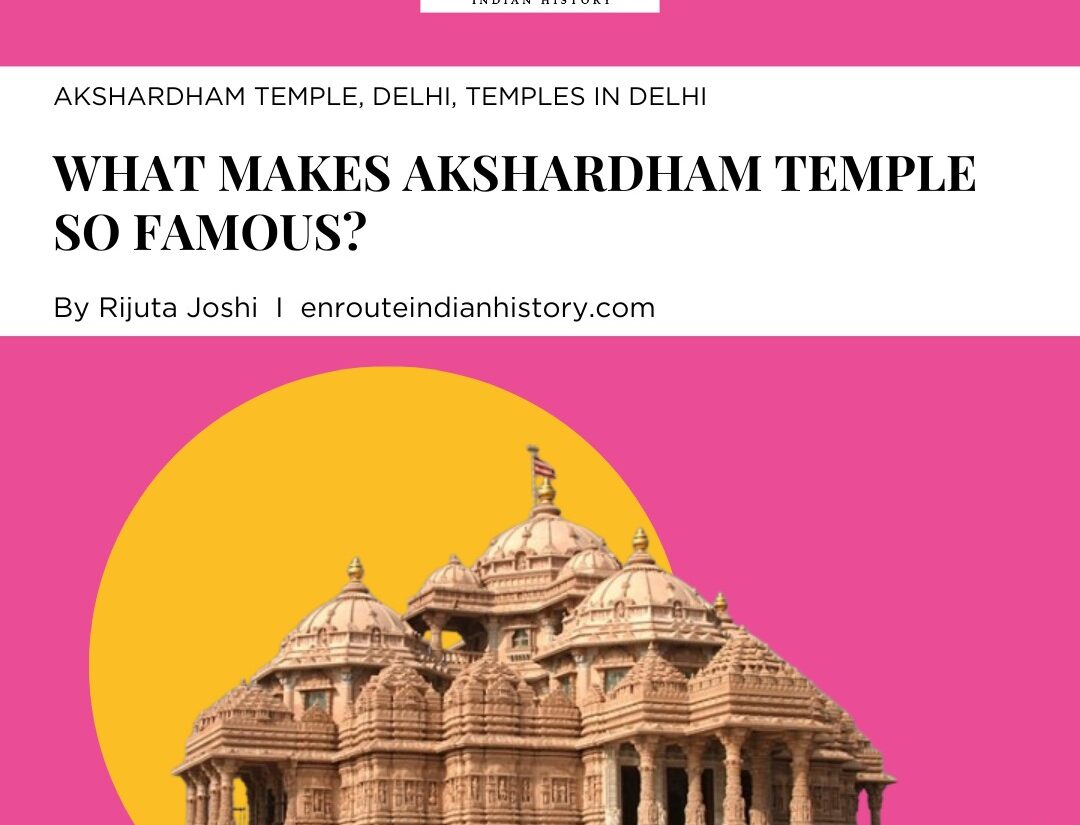
Light is one of the oldest and most meaningful symbols in the world, found in cultures and religions worldwide forming a very rich corpus. In Hinduism, Diwali or Deepawali which is also termed the ‘Festival of Lights’ is also a manifestation of this same tradition. It does this symbolically by acting as a beacon of brilliance, especially with the glorious lighting of earthen lamps, diyas, and the bursting of firecrackers/fireworks.
While the story of earthen lamps is as old as the civilization, the history of firecrackers however is not as linear. The standard explanation tells us that the earliest evidence of fireworks comes from the Song dynasty in China in the 10th century from where it spread to the rest of the globe. But this interpretation has come under revision in recent years.

Krishna and Radha playing with fireworks, Kishangarh School, early 19th century Lacma Collection
Fireworks in Ancient India
In the article Fireworks in Encyclopedia Britannia (14th edition), it is mentioned that pyrotechny, or the science of fireworks can be said to have begun when a prehistoric filmmaker combined saltpetre with his charcoal cooking fire to create tinder. Keeping in mind the use of saltpeter in ancient India, it is not hard to see why we find so many terms for firearm-like weapons in ancient sources. Sukraniti which is a text attributed to Shukracharya mentions gunpowder, guns, and canons using terms such as nalika astra (gun), brihad nalika (cannon), and topa and brihad golam (shot). A verse from the same mentions “Six or four palas of Survaci salt, one pala of sulfur and charcoal from the wood of arka, snuhi….can be made into gunpowder” a technique which in 1880 Gustav Oppert noticed to be similar to the one mentioned in Wujing Zongyao (Complete Essentials for the Military Classics, 1040 to 1044). Apart from this, the Arthashastra mentions recipes for inflammable powders referred to as ‘agnisamyogas’ or ‘agniyoga’. Nilamata Purana, a source dated between the 6th and 8th centuries CE, states that to depict the journey to the deceased ancestors, fireworks must be lit on the 14th or 15th day of Kartika (Diwali). However, nearly all of these sources have been under debate regarding their authenticity and compilation periods.

A drawing of a ‘Maker of Fireworks’ by an anonymous Calcutta artist, c.1794-1804
Fireworks in Medieval India
It is thus easier for us to locate more credible information from the medieval period. The widely accepted beginning of credible use of pyrotechnics in India is the entry of Mongols into the subcontinent politics. This is because, after the development of firepower in China between the 10th to 12th centuries, it was during the 13th and 14th centuries that the full development of fire weapons began under the supervision of Mongols. The interaction of the Delhi Sultanate with Mongols is said to have brought Chinese firework techniques into the subcontinent, unlike the Portuguese distribution of the same to the rest of the world at a much later age. In his book Tarikh-i-Firishta, medieval historian Firishta said that fireworks were used to greet the messenger of Mongol ruler Hulagu Khan in March 1258.
Hence the earliest credible use we see of Indian fireworks is only in 1443, when Abdur Razzaq, an ambassador to the Vijayanagara court during the reign of Devaraya II, mentions the use of fireworks in the Mahanavami festivities. An account of pyrotechnics featuring the “bursting” of “flower scattering rockets” (Hawãi- Hã- I Gulrez ‘Anberbez Mi Bakht) on the occasion of Shab-i-Baraat at Delhi during the reign of Sultan Firoz Tughlaq (1351–88) can be found in Tarikh-i-Firuz Shahi, authored by Shams-i-Siraj ʻAfif.
Among Sanskrit sources, we find that in the Kautukacintamani by Gajapati Prataparudradeva of Orissa, as well as in the Akasabhairava Kapla, there are several folios full of formulas for the preparation of various fireworks for ‘vinodanani’ or royal entertainment. Portuguese writer and officer Duarte Barbosa writes in Travels (1518) about the use of fireworks in a Brahmin wedding in Gujarat signifying to us that fireworks were being produced largely enough to be used in a wedding. Thus we see the slowly spreading use of the technology for recreation other than defence/offense purposes.

A princess and her ladies celebrating Diwali in a palace garden with yogis and yoginis, from the Mughal school of painting, from the V&A’s collection.
The above context provides us with the picture of fireworks development continued at the helm of the Mughal Empire. Fireworks or firearms, the Mughals were not keen to compromise on either. In the realm of recreational pyrotechnics, scholars assume the Mughals to have entrenched the tradition of bursting firecrackers during the festival of Diwali. Jashn-e-Chiraghan, the Persian name for the same, became a part of Akbar’s overarching religious policy of inclusion of the Mughal court. The Agra Fort was completely illuminated with lighting during the festival, and the illuminated walls could once be seen for many kilometers.
Fireworks displays that wowed the entire city were held in the open space in front of the Agra Fort. After the red sandstone ramparts of the fort were built, the festivities started during the reign of Emperor Akbar and lasted till the end of Emperor Shahjahan’s reign. Numerous Mughal paintings very carefully describe the picture of the elated celebrations of Diwali in the Mughal Court.
The symbolism of light was important for Akbar and his successors. Akbar’s persona was crafted by Fazl as Badshah-i-Adil (the righteous monarch) and Insan-i-Kamil (the ideal human). The ideas, conceptions, and philosophies were not exclusive to any one faith, and the Mughal thought of kingship in his writings was centered on the idea of heavenly light. Mughal monarchs began to be virtually always portrayed in Mughal paintings with a golden sun halo over their heads, starting from the later portion of Akbar’s reign.

The Marriage Procession of Dara Shikoh, Unknown, 1740-1750 AD
Firework was not reserved for Diwali but became a part of other joyous occasions as well; one famous example is the wedding of Dara Shukoh which is described to have had enough fireworks to create day at night. Fireworks are mentioned in the chronicles of the reigns of Shah Jahan and Aurangzeb as being utilized at coronations, birthday weighings (tuladan), and marriages.
But things were not always smooth. Aurangzeb, the Mughal emperor, wasn’t a big admirer of pyrotechnics. On April 9, 1667, Aurangzeb issued a farmaan, or royal edict, outlawing fireworks. The farmaan, headlined “Restriction on Aatishbaazi,” said that it is not permitted to exhibit pyrotechnics. It further said that no one should partake in ‘aatishbaazi’.
Fireworks in Early Modern India
But joyous festivities heed no restrictions. It is very clear that from the late 1700s, with the increasing dwindling of Mughal hegemony over the subcontinent, certain farmaans were not heeded. The Marathas, who were slowly gaining power in the Deccan, continued the practice of bursting firecrackers during Diwali and other festive occasions. We find in Mahadji Scindia’s address to Peshwa Savai Madhavrao an account of Diwali festivities in Kota, Rajasthan mentioning the ‘daruchi lanka’ or the Lanka of Fireworks, where images of different minor characters of Ramayan are prepared with gunpowder for firework displays. The Peshwa later asked Mahadji to arrange for similar festivities and the display of fireworks took place at the foot of Parvati Hill near Poona.
From the reign of Asafaddaula, the Nawab of Lucknow in the late 1700s, we find the English prepare elaborate displays of fireworks to impress Indian princes, the mention of which we find in Marathi sources sent to Nana Farnavis. The lengthiest description is of an English pyrotechnic ‘artist’ Karar who prepared a display programme for the Nawab around 1790. The Nawab Vazir of Avadh and the Nawab Nizam of Bengal celebrated Durga Puja and Diwali together, as well as putting on amazing fireworks displays, in the 18th and 19th centuries. In this way, Diwali became one of the most important festivals in India.

The grounds of the palace of Farhat Baksh in Lucknow were lit by innumerable colored lamps by Sita Ram, 1814-15
We understand from this paper that fireworks as a part of festivities have become integral to celebrating joyous occasions and festivals in India over a long period of time. Diwali is the festival that celebrates Lord Ram’s triumph over Ravana and his subsequent return to Ayodhya. The celebration of Diwali thus represents the triumph of light over darkness and what can be a better way to celebrate this than lighting up your favorite patakhas with your near and dear ones?
Reference
- Gode P.K. (1953) The History of Fireworks in India: between AD 1400 and 1900, The Indian Institute of Culture, Bangalore
- February 22, 2024
- 8 Min Read























